Not long ago, incandescent bulbs were the only option, but today, the market offers a much broader choice: halogen, LED, and compact fluorescent. How do you find the right bulb for the lighting you want?
Understanding bulb terminology
Lighting was once only measured in watts, but today several units of measurement are used to detail the bulbs in stores.
Watt (W) : Unit of measurement that determines the bulb’s energy consumption.
Lumen (LM) : Unit of measurement used to evaluate the quantity of light emitted by the bulb (luminous flux). The higher the number of lumens, the brighter the light.
We recommend that you vary your light intensity depending on the room and its function:
- 50 lumens per ft2 for the kitchen and bathroom;
- 30 lumens per ft2 for the dining room, entrance, and office;
- 20 lumens per ft2 for the living room, bedroom, and hallway.
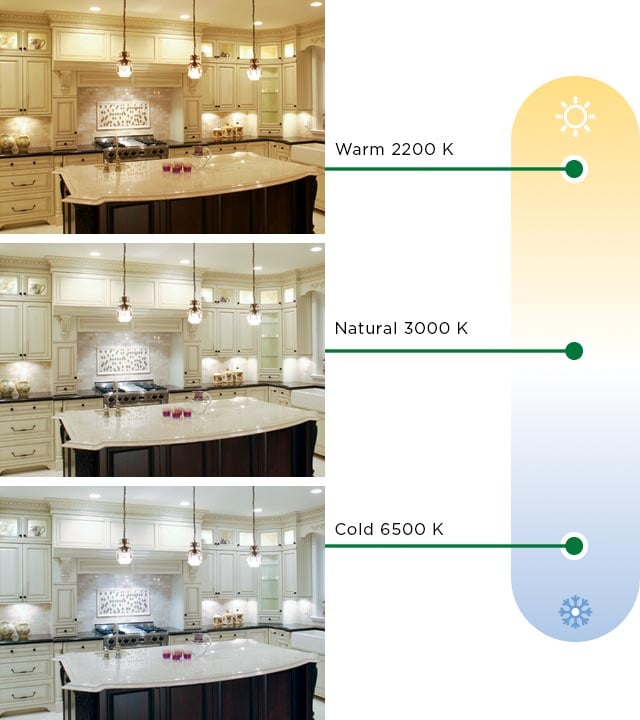
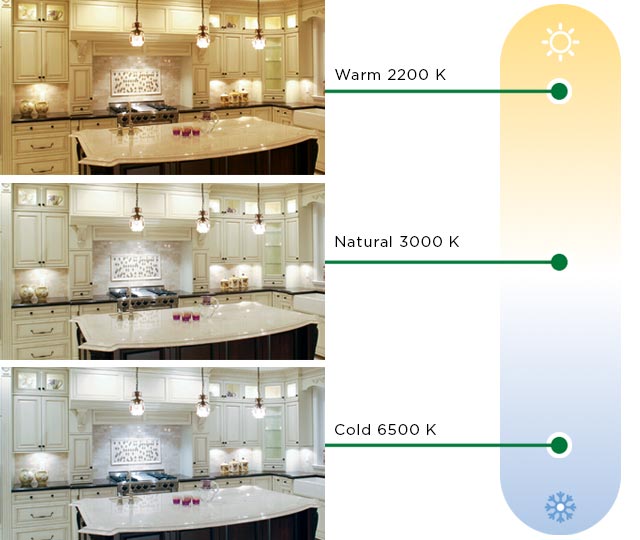
Kelvin (K): Unit of measurement that indicates the colour temperature of a bulb. Kelvins most often range from 2,200 K to 6,500 K.The lower the temperature index (2,200 K to 3,000 K), the warmer the hue; the higher the index (5,000 K to 6,500 K), the cooler the hue (blue/white). In the middle range (3,500 K to 4,100 K), we obtain a more natural shade resembling daylight.
Type of bulbs
There are many types of bulbs. Each has its own advantages and should be chosen to suit your needs (room, ambience, price).
Conventional incandescent : This bulb is the most energy-intensive. Its filament is quite fragile and can burn or break easily. Soon, conventional incandescent bulbs will be phased out from the market and replaced with more efficient bulbs that consume less energy.
LED : This semiconductor device (diode) converts an electrical current into light radiation. The LED bulb is very energy-efficient, as it uses five to ten times less electricity than a conventional bulb (it also uses less energy than a halogen bulb). It switches on instantly and emits very little heat. What’s more, it has the longest lifespan (15,000 to 50,000 hours of use), making it not only economical, but also environmentally friendly.
Halogen : The halogen bulb is closest to natural light in terms of contrast. However, it generates a lot of heat and might not be ideal for a reading corner if the lamp is placed close to the chair. This type of bulb fits the same light socket and can be used for the same purposes as a traditional incandescent bulb. It is ideal for illuminating and enhancing a work of art. The halogen bulb is available in a wide variety of shapes and colours and has an average lifespan of 2,000 to 3,000 hours (2 to 3 years).
Compact fluorescent : The highly energy-efficient compact fluorescent bulb emits the same luminous flux as an incandescent bulb. Its light closely resembles daylight and causes the least amount of glare. Since it generates little heat, it is ideally suited for offices. Finally, a compact fluorescent gives your room warm lighting and switches on almost instantly. Its lifespan is between 5,000 and 10,000 hours (5 to 10 years).
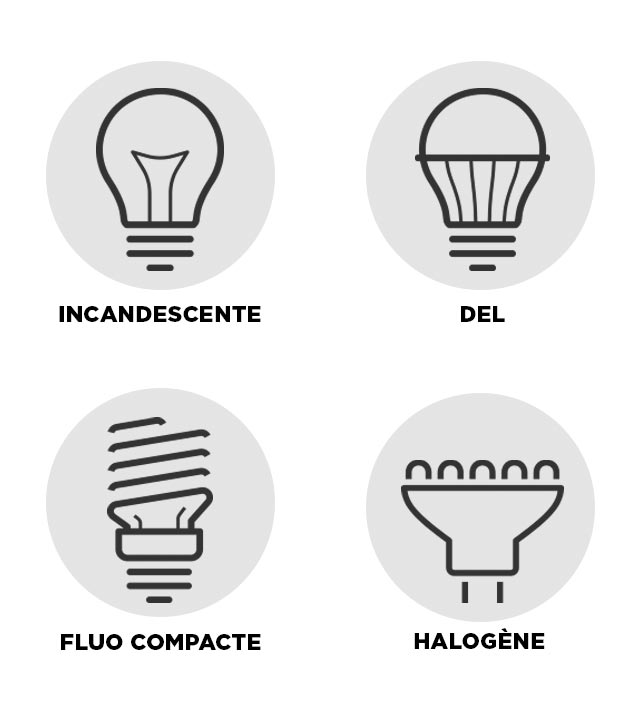
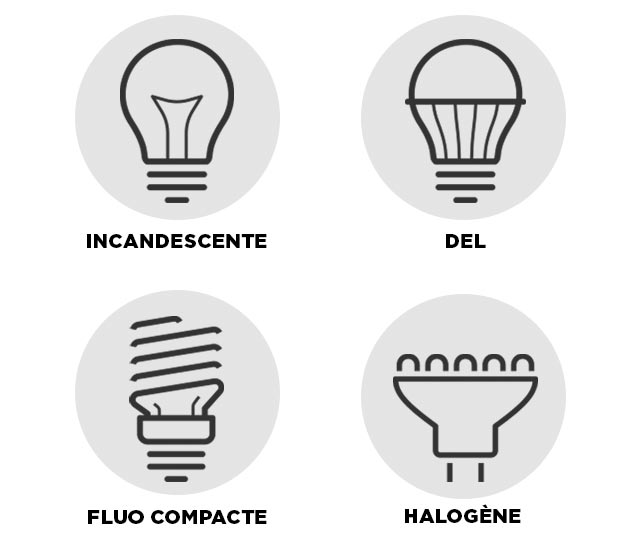

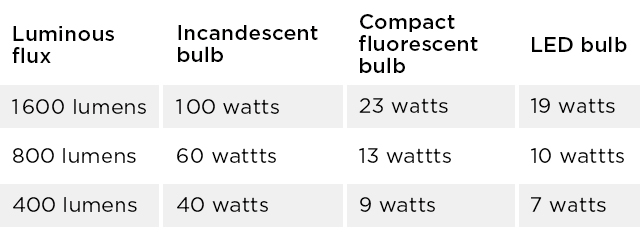
Choose the correct shape and base
In addition to light intensity and colour, you should consider the shape of the bulb and its base to ensure it fits your lamp model. All light bulbs are available in a variety of shapes (globe, flame, spot, spiral, etc.), styles, and bases. To select the correct base, refer to the instruction manual or packaging when purchasing a new fixture.
And don’t forget that dimmable LED light bulbs allow you to vary the brightness of your room to suit your preferences and moods. These are especially convenient if you want to create a romantic setting or curl up with a good book. If you get a dimmer, don't forget to to also purchase dimmable bulbs.
Finally, vintage bulbs never go unnoticed. With their smoky and antiquated luminous flux, these bulbs go well with industrial-looking light fixtures.
If you can’t find what you’re looking for, just ask one of our in-store advisors.
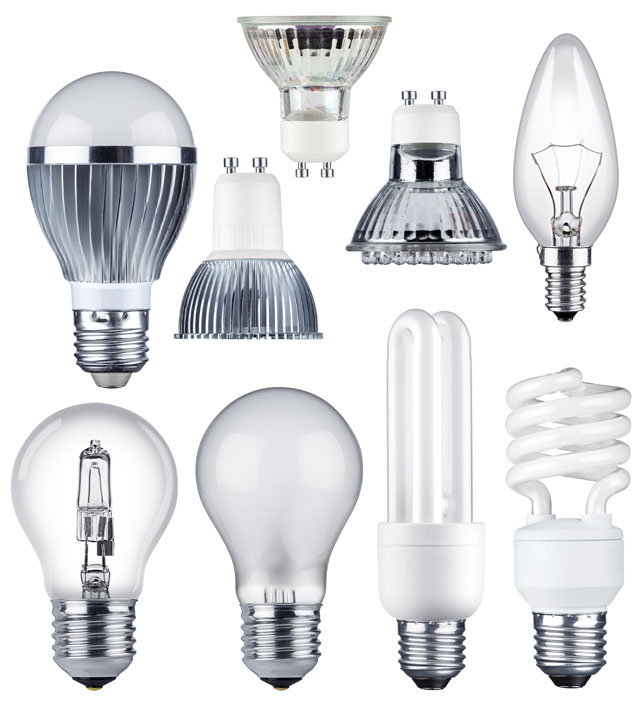
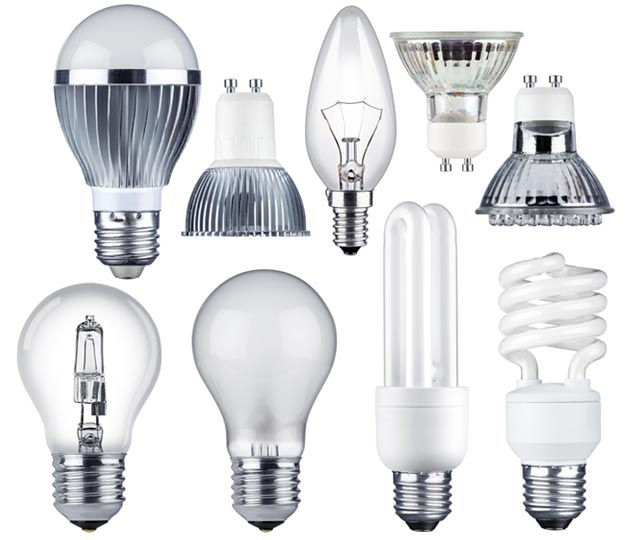
Have you heard about smart bulbs?
The smart bulb, an emerging lighting trend, connects to your Wi-Fi or Bluetooth network and can be controlled remotely using an application on your smartphone, tablet, computer, or through a Google Home Assistant. It can also be operated by remote control. From inside or outside your house, the bulb can be turned on and off with a simple gesture or voice command, without the use of a switch. You can also vary the light’s intensity or change its colour to create a different ambience depending on the time of day. The smart bulb can flash to alert you when you receive an e-mail, or pulse to the rhythm of your music. As smart bulbs are low-power LEDs, they help reduce your electricity consumption.
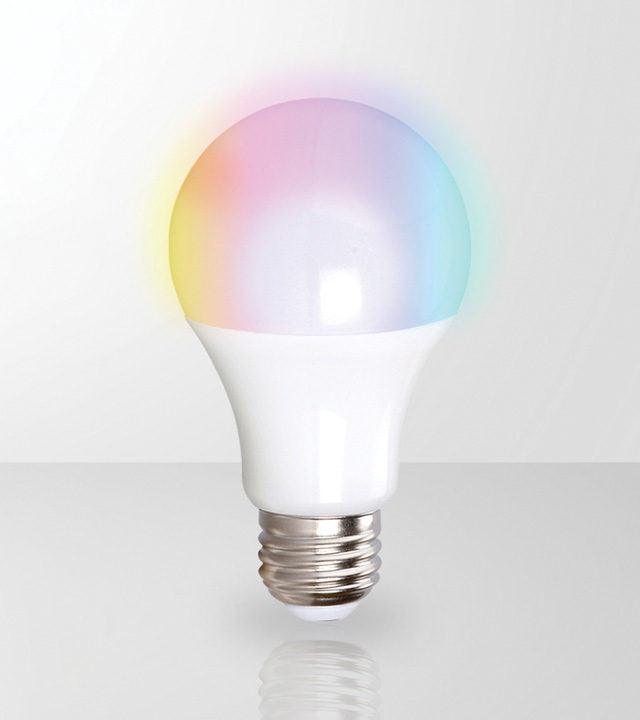
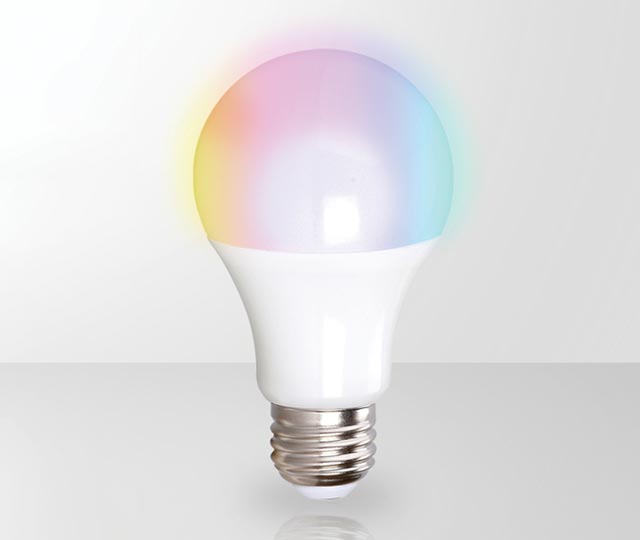
Need more advice or have special needs?
Feel free to contact your local BMR dealer or visit our selection of products directly on our website.














